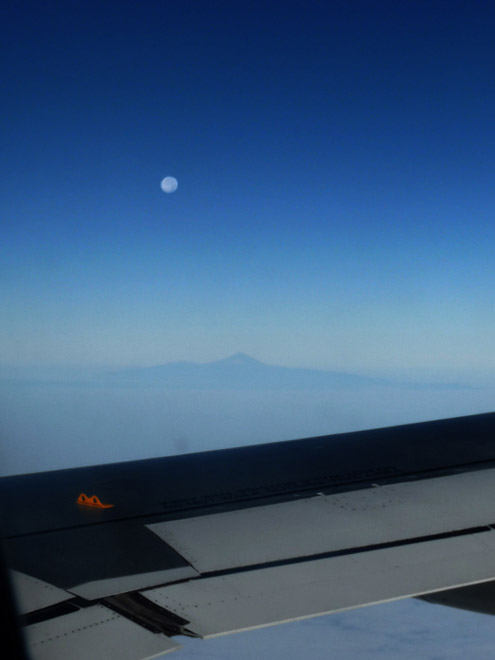January 11, 2020
Earth & Moon
Originally published July 30, 2010
 image by Peter Oberc, Slovenia |
From the darkness of space through the atmosphere to the surface, this image captures many possible stories about the Moon. The Moon's airless sky, blacker than the deep blue of Earth's upper atmosphere, allows every incoming projectile to hit its surface at cosmic speeds. Small craters form everywhere, and gradually are eroded away by subsequent impacts. The distant mountain is Pico de Teide on Tenerife Island, a volcano in the Canary Islands, off Africa. A range of mountains on the Moon is named after this island, and 50-150 years ago many observers thought lunar craters were also volcanoes. But the shape of Teide is unlike any crater on the Moon. Teide has a small summit pit that is miniscule compared to the mass of rest of the mountain, but few observers seemed to notice that difference. Finally, the aircraft wing represents technology that transformed knowledge of the Moon and solar system over the last 50 years.
|
Yesterday's LPOD: Non-Random
Tomorrow's LPOD: Two More Ancient Greeks
COMMENTS?
Register, Log in, and join in the comments.



